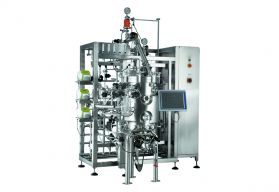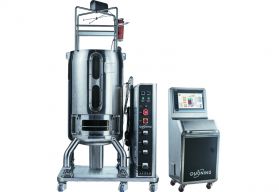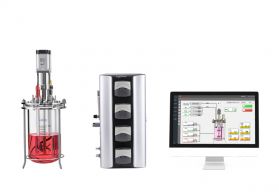Most currently available vaccines are mainly based on inactivated or attenuated live vaccines. Although these traditional vaccines have been used effectively against various infectious diseases, some of them have several limitations, including low likelihood of inducing a stronger immune response and their poor efficacy. Recent outbreaks of infectious diseases demonstrate the need to develop robust vaccines to overcome these limitations. The main challenge is to develop new technical approaches and boost immunity without compromising safety, efficacy and tolerability. Recent advances in vaccines based on DNA, mRNA, and recombinant viral vectors provide effective vaccine development methods for difficult-to-target pathogens and control infectious disease outbreaks.
Virus-like particle (VLP) technology provides an alternative platform for the development of effective vaccines against serious infectious diseases, and it is being developed in parallel with vaccines based on mRNA and viral vectors. VLPs are also much more immunogenic than other subunit vaccines because they present repetitive epitopes on their surface, making them more reliably detectable by the immune system. On the other hand, subunit vaccines may be less immunogenic due to misfolding of the target antigen or insufficient presentation to the immune system, and moreover, they require adjuvants and repeated vaccinations to elicit an adequate immune response. The term virus-like particle was first described by Fraenkel-Conrat and Williams (1955) by recombining tobacco mosaic virus (TMV) particles from purified RNA and protein components. The potential of these nanostructures to induce potent immune responses was then further investigated. The VLP platform can overcome various problems typically associated with traditional vaccines; specifically, infectivity, reversion to virulent forms, mutation risk associated with live attenuated vaccines, and reduced immunogenicity, toxicity instability, low yield and long formulation time associated with inactivated vaccines.
These bio-inspired nanostructures feature repetitive and high-density antigens from different viruses, helping to trigger a strong immune response. Furthermore, these highly immunogenic molecules possess the self-assembling properties of viral proteins. They are biocompatible and have the potential for structural flexibility during synthesis. They can be chemically or genetically modified and exhibit increased stability, uniformity, and functionality, and are considered effective tools in various biomedical applications. Depending on the presence or absence of a lipid membrane, VLPs can be classified as either enveloped or nonenveloped.
However, some of the key challenges associated with VLPs are low stability, difficult downstream processes, high production costs, and sensitivity to environmental conditions. Many different VLPs have been synthesized in various expression systems, such as bacteria, yeast, mammalian cells, insect cells, and plants. VLP-based vaccines have the potential to be used to treat various infectious diseases, including HIV, influenza, hepatitis B, hepatitis E, malaria, Ebola virus, SARS-CoV-2, Zika virus, dengue fever, and foot-and-mouth disease, among others. Several VLP-based vaccines have been licensed and marketed, including Engerix-B® and Recombivax HB® for HBV, Gardasil® and Cervarix® for HPV, Hecolin® for HEV, and Mosquirix™ for malaria.
 TransInsect Series Insect Cell Culture Medium
TransInsect Series Insect Cell Culture Medium  TransVA Series Suspension Culture Medium for Vaccine Production
TransVA Series Suspension Culture Medium for Vaccine Production  Transpro Series HEK293 Cell Culture Medium
Transpro Series HEK293 Cell Culture Medium  Stainless Steel Suspension Cell Culture Bioreactor
Stainless Steel Suspension Cell Culture Bioreactor  DuoBioX Pro Single-use Bioreactor
DuoBioX Pro Single-use Bioreactor  DuoBioX Explore Multi-Parallel Benchtop Glass Bioreactor
DuoBioX Explore Multi-Parallel Benchtop Glass Bioreactor  GlacierStore™ single-use freeze-thaw bag
GlacierStore™ single-use freeze-thaw bag Copyright © Shanghai Duoning Biotechnology Co., Ltd. All Rights Reserved Sitemap | Technical Support: 
Message-